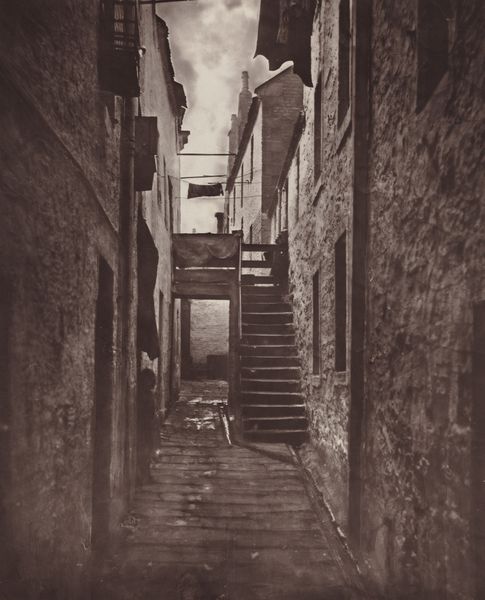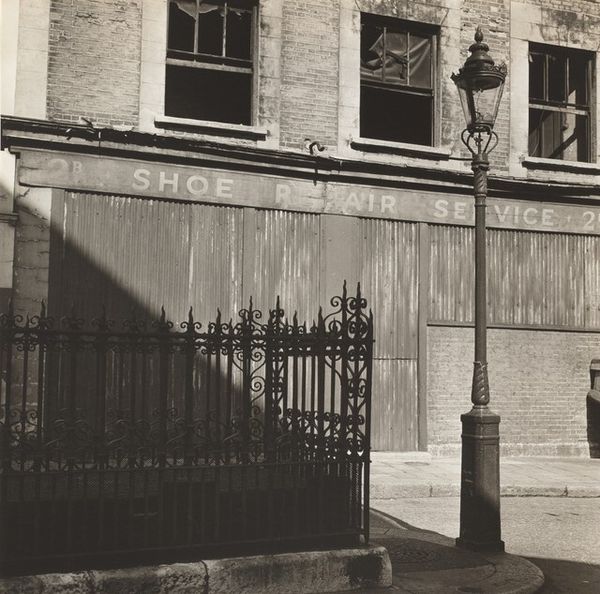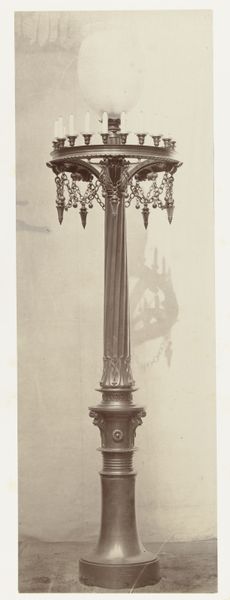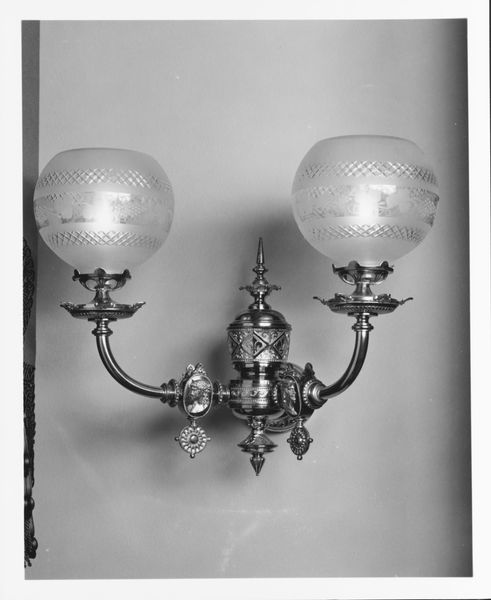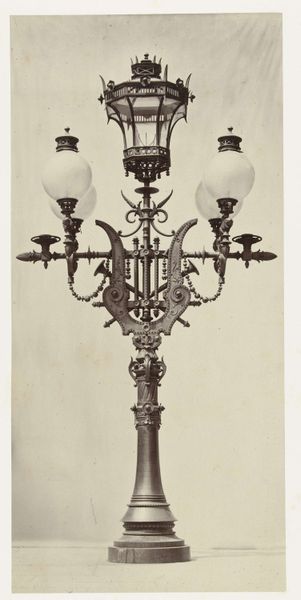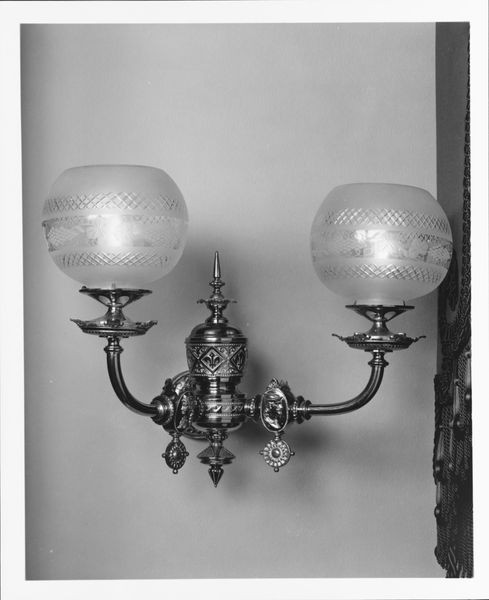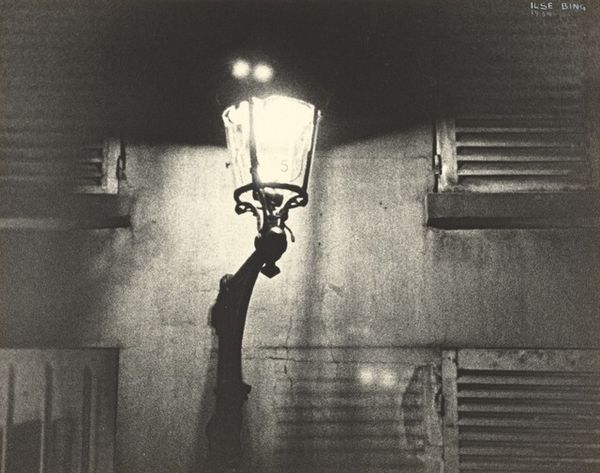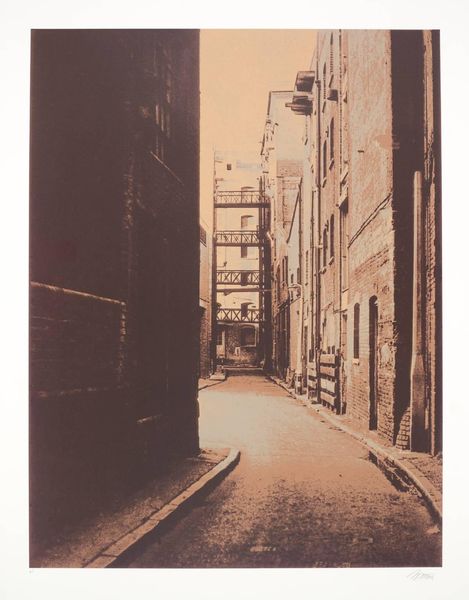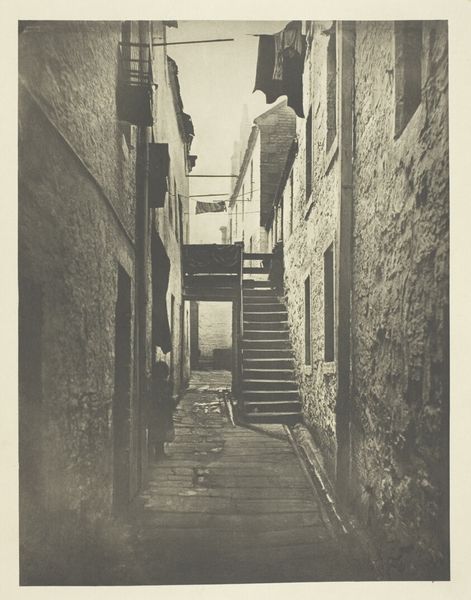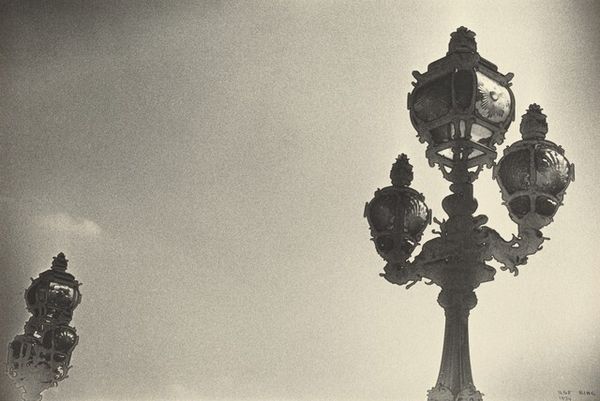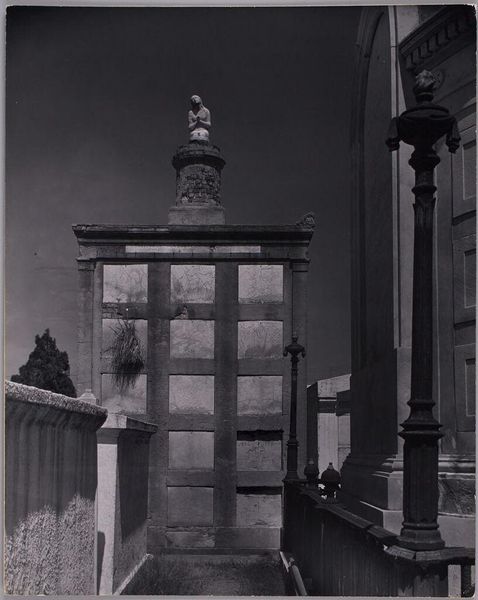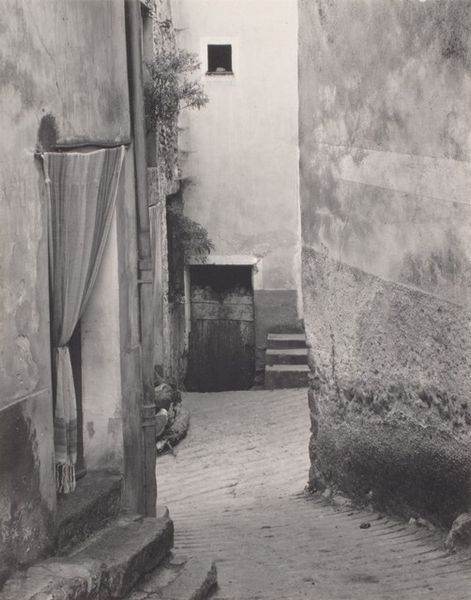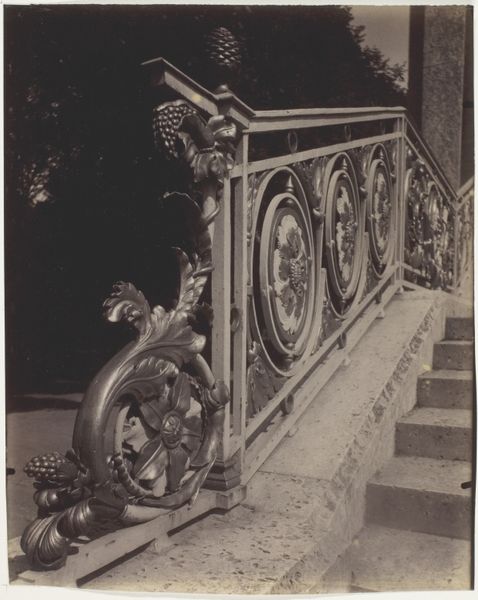
daguerreotype, photography
#
film photography
#
sculpture
#
daguerreotype
#
outdoor photo
#
street-photography
#
photography
#
historical photography
#
cityscape
#
public art photography
Dimensions: image: 36.2 x 23.5 cm (14 1/4 x 9 1/4 in.) mount: 60.3 x 45.1 cm (23 3/4 x 17 3/4 in.)
Copyright: National Gallery of Art: CC0 1.0
Curator: Charles Marville created this daguerreotype, titled "Hôtel de la Marine," between 1864 and 1870. Editor: My first thought is that it's incredibly still. The sharp detail almost gives it a sense of hyper-reality, like a stage set waiting for actors. It looks quite austere. Curator: Indeed. What we're seeing here reflects a pivotal moment in Parisian urban planning, the work of Baron Haussmann during the Second Empire. Marville was commissioned to document the city before and after these large-scale transformations. So this image functions as an historical document and a statement of the transformation process. Editor: The lamp post strikes me as a symbol of modernization. Metal, manufactured, placed centrally, like a new organizing principle imposed upon the pre-existing structure, visible through the archway. Curator: Precisely. It's all about the material reality. These weren't just aesthetic choices, but profound shifts in labor practices, resource extraction, and industrial manufacturing. The means of production themselves were changing how Parisians experienced their city. Think of the shift from artisanal craft to mass-produced infrastructure. Editor: I'm also considering what this kind of imagery meant for the Parisian population at the time, in terms of accessibility, right of movement, and ideas about hygiene. It embodies an effort toward modernization but simultaneously displays an act of forced uprooting and erasure of communities and culture through the lens of social hierarchy and access. Curator: It forces one to examine the consumption practices related to the project. Where did the metal for that lamp post come from? Who was displaced to make way for these "improvements?" What was lost? The scale is all off. It must have been incredibly costly and involved a large workforce. Editor: I am really intrigued by the traces of water near the base. To what degree did Marville engage with concepts about purity and purification, social classes, and colonial authority over who gained access to resources in Paris at this moment in history? Curator: Looking closely really drives home how deeply entangled these infrastructural developments are with material conditions and political ambitions. Editor: I think, too, there’s something very potent about capturing a moment when these grand ideas, often propelled by male and white colonial views of modernity, met the everyday reality of the street. Curator: An unsettling harmony of light, shadow, and historical weight. Editor: Exactly, I think it serves to illuminate that transformation. Thank you.
Comments
No comments
Be the first to comment and join the conversation on the ultimate creative platform.
